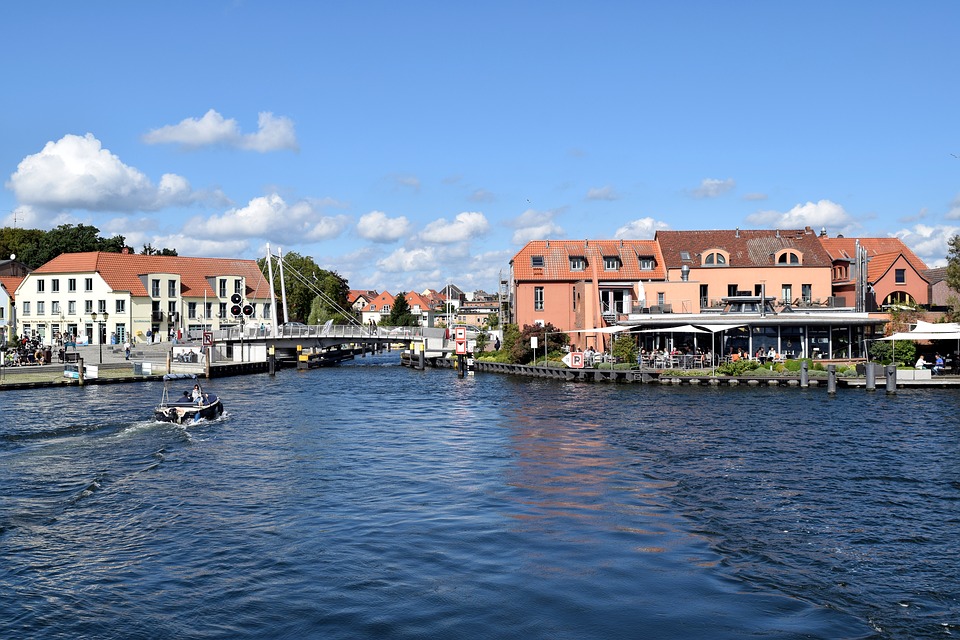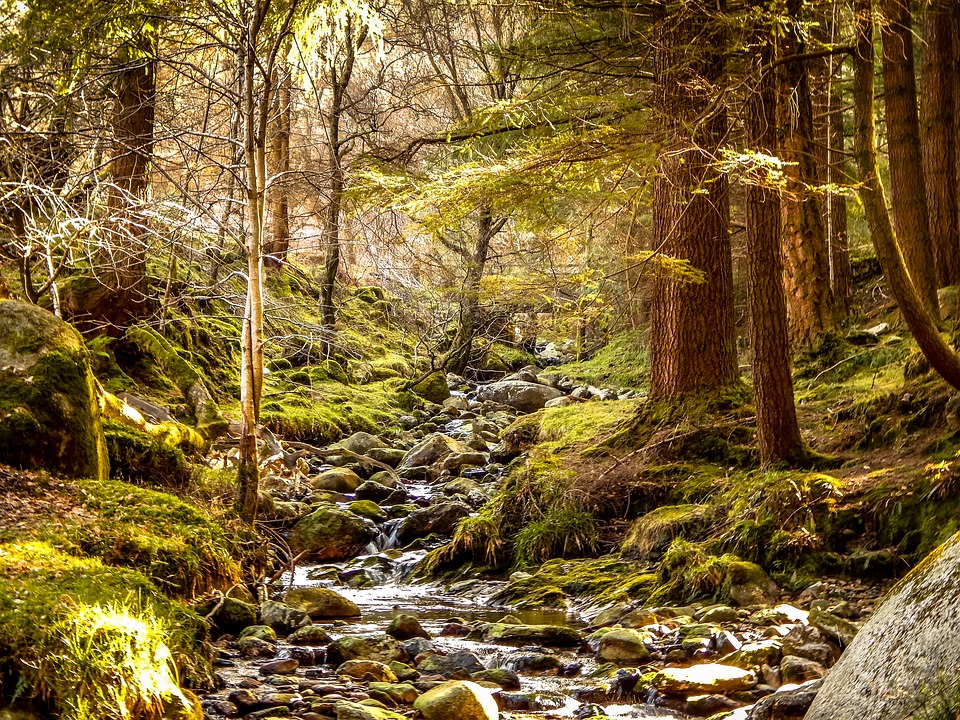The story behind Renfrew can be traced back to the Bonnechere River.
The first settlers to visit this area from Europe came via the river, whose mouth is at the Ottawa.
Getting through the first chute was certainly easier than navigating the second. Getting everything carried around the rapids took time, but eventually, a small settlement was started up. The first settlers showed up in 1820, when they started clearing the land. It might be hard for locals to believe it, but according to period accounts, the centre of the town was what was called an ash swale, which is a low and wet spot of otherwise good land. Lots of oak and ash were found there. Now, there are spruce and balsams where the current high school is. What’s currently called Thomson’s Hill was originally to the south of town. Here, settlers found the best hardwood grove around, including big maples, black birch, and beech. Along the banks of the river, the forest was predominantly evergreens, like cedar, spruce, and red pine.
Early on, Renfrew was originally known as Horton. Three families called the area home, namely those of Joseph Mayhew, Joseph Brunette, and Sgt. Thomas Airth. The census documented 21 people. Supplies had to come in from Perth, which was a long hike. Perth served as the centre for municipal politics in the Bathhurst district. Sgt. Airth served as the representative for the village. Over the coming years, quite a few Scots immigrated to Canada where they started farming land in Renfrew and the surrounding area. Their cultural heritage resonates even today in names of places like Renfrew, Arnprior, Burnstown, Lanark, and Glasgow. French Immigrants were also among the new arrivals. One of them, Xavier Plaunt, decided to marry the daughter of one of the Scots, Jeanette McLean. It was the year 1835 when most of the current land of the town of Renfrew was getting farmed by three different families. They were Antoine Beauchamp, Peter Cameron, and Xavier Plaunt.
John Lorne McDougall opened the first store in 1840. He also was the one that built the grist mill that’s across the river. It still stands today, known as the McDougall Mill Museum. Most of the new village’s land was owned specifically by Xavier Plaunt, who sold it off at cheap rates, or free for public buildings and churches. You can visit the ending point of Renfrew Avenue E. at Jennet St. to find Plaunt’s gabled, red-bricked house still standing. As this village grew in size, it started being called Renfrewville of the Horton district.
The town featured a tannery, sawmill, brewery, doctor’s office, tailor, axe factory, post office, carriage shop, cobbler, and blacksmith.
It’s hard to grasp the idea that there wasn’t a single bridge crossing the Bonnechere back then. If someone had to cross, then they’d just stand along the bank and yell out. The Gibbons family was the one that owned a farm right at the crossing point, and they’d row over the river in a boat in order to ferry people across. The first bridge over was built by a combination of loggers and various shanty men as a means of punishment for their drunken brawls in town, as well as avoiding going to Jail in Perth.
The Honorable Francis Hinks owned land north of the river, and had it surveyed. He would later become a Sir as well as the prime minister for Upper Canada for four years. The land he had surveyed became the location of a new county government, including a public square, a school, and numerous residential streets. He instituted progressive policies, including damming up the chute, the creation of a plume, and offering cheap land and free water. This all resulted in an economic boom up and down the northern banks of the river. John Lorne McDougall was one of the people to take advantage of all this. He bought land in 1855 for 5 shillings where he built up a grist mill. This spared locals the costs and time of hauling their corn across the Ottawa River to a mill in Lower Canada or overland to Perth. Hinks had a dream of Renfrew being the county seat, but Pembroke was eventually chosen instead.
1895 was the year that saw a wire bridge cross the river purely by public deed as the town actually refused to participate.

This ‘swinging bridge’ is currently a town landmark. It was also a lot more secure and safe than its preceding wire and plank structure.
The first local agricultural exhibition got held in 1855, which means that the Renfrew Fair is one of the nation’s oldest.
Three years later, Renfrewville village separated from the Horton township. It elected John Smith as its first Reeve. ‘Let It Flourish’ was chosen as the official motto at the initial municipal council meeting held on the 30th of August, 1858. Orange Wright, John Coumbs, and John O’Hara were respectively hired as the first street inspector, fireman, and policeman. Two rooms were rented inside the Albion Hotel as the lock-up. Renfrew had a name change and switch to town status in the year 1895.
The railway wound up bringing even more people to this area, while also opening up markets to Renfrew industries. In 1872, east and west connections were linked via the Canada Central line that was later known as the Canadian Pacific Railway. In 1884, north and south connections were formed via the Kingston and Pembroke, later known as the Canadian National Railway.
Lumber barons JR Booth and MJ O’Brien both were seriously involved in the railway construction.
Passenger rail service ended for Renfrew in 1990, and the last train of any kind passed through in August of 2011, when the Canadian Pacific got torn up. The railway era was over.
Early roads were typically muddy paths with many potholes hacked out through the forest. Many original highways went right through towns before traffic congestion meant that bypasses needed to get built going around major towns. Highway 60 is now the only primary highway which still goes through the middle of town.
MJ O’Brien had a substantial impact on this town. He originally settled here, coming from Montreal once he met his wife in Calabogie. He had a vast fortune from his involvement in the lumber industry early on, but then later in railways, hockey, and munitions plants. He personally owned four out of the first six teams of the National Hockey Association. That means he was the father of the NHA/NHL, and Renfrew is the birthplace of it. His mansion is still standing to this day, sitting on the northeastern corner of Barr and Quarry. He owned a lot of land and built a movie theatre and opera house. Quite a few industries in Renfrew featured his name. His 1940 funeral was likely one of the largest events in town history.
Renfrew’s history is highly visible in many facades and buildings around town. Raglan is the main street and full of buildings a century old or more, with side streets featuring original homes.
This video show a bird’s eye flight over Renfrew from a few years back …
Renfrew has a number of claims to fame:
- Home to the Renfrew Millionaires and birthplace of the NHL
- Jack Davis, a Renfrew citizen, was the first injury among Canadian soldiers in WWI.
- Every 25lb shell in WWI from Canada passed through Renfrew in order to get filled with cordite explosives. This happened at the Hall St. munitions plant.
- Renfrew’s fair is one of Canada’s oldest.
- Dr. Charlotte Whitton was the first woman to be mayor of any Canadian city. Originally from Renfrew, she served as the Mayor of Ottowa twice.
- The town of Renfrew lost 68 men to WWII but 69 to WWI.

